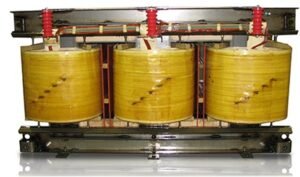Weathering the Future: The Impact of Weather Tech on Our Daily Lives

Introduction
In the ever-evolving landscape of technological advancements, one sector that often goes unnoticed but significantly influences our daily lives is Weather Technology. From predicting sunny days to navigating through stormy nights, Weather Tech plays a pivotal role in reshaping the way we experience and respond to the elements around us.
Harnessing Precision with Weather Predictions
Advanced Meteorological Models
In the contemporary era, Weather Tech has elevated weather predictions to an unprecedented level of accuracy. Through the implementation of cutting-edge meteorological models, we can now anticipate atmospheric changes with remarkable precision. These models analyze a myriad of data points, including temperature, humidity, wind patterns, and atmospheric pressure, to provide forecasts that guide our daily activities.
Real-time Data Integration
Gone are the days of relying solely on traditional weather forecasts. Today, Weather Tech leverages real-time data integration from an extensive network of weather stations, satellites, and sensors. This dynamic approach ensures that the information provided is not only accurate but also constantly updated, allowing individuals and businesses to make informed decisions in the face of changing weather conditions.
Revolutionizing Agriculture: A Closer Look
Precision Farming Techniques
In the agricultural sector, Weather Tech has emerged as a game-changer. Precision farming techniques, enabled by accurate weather predictions, empower farmers to optimize their crop yields. By aligning planting and harvesting schedules with favorable weather conditions, farmers can mitigate risks and enhance overall productivity.
Climate-Resilient Crop Planning
Weather Tech doesn’t just stop at predicting the weather; it extends its influence to climate-resilient crop planning. Through sophisticated algorithms, farmers can identify crops that are better suited to withstand specific climatic conditions, contributing to sustainable agriculture practices and ensuring food security.
Navigating Stormy Nights: The Role of Weather Tech in Disaster Management
Early Warning Systems
One of the most critical aspects of Weather Tech is its role in disaster management. Advanced early warning systems utilize predictive modeling to alert communities about impending natural disasters such as hurricanes, tornadoes, or floods. This timely information allows for proactive evacuation and resource allocation, minimizing the impact of these events on human lives.
Crisis Response Coordination
In the aftermath of a natural disaster, Weather Tech continues to play a crucial role in crisis response coordination. By providing real-time weather updates, emergency services can strategize and deploy resources effectively, ensuring a swift and well-organized response to mitigate the effects of the disaster.
The Future of Weather Tech: Innovations on the Horizon
Artificial Intelligence Integration
As we look ahead, the integration of Artificial Intelligence (AI) into Weather Tech is set to redefine the landscape once again. AI algorithms can process vast amounts of historical weather data, identify patterns, and enhance the accuracy of long-term weather predictions. This not only aids in planning but also contributes to our understanding of climate change and its potential implications.
Sustainable Solutions for a Changing Climate
Weather Tech is increasingly focusing on sustainable solutions to address the challenges posed by a changing climate. From developing technologies to mitigate the impact of extreme weather events to promoting eco-friendly practices, the sector is committed to fostering a resilient and environmentally conscious future.
Expanding Horizons: Weather Tech and Urban Planning
Smart Cities Integration
Beyond individual impact, Weather Tech is poised to transform urban planning through the concept of Smart Cities. By integrating weather data into city planning, authorities can optimize infrastructure projects, enhance energy efficiency, and develop resilient urban spaces that can adapt to changing climate conditions.
Climate-Responsive Architecture
Architects and designers are increasingly turning to Weather Tech to create climate-responsive structures. From buildings that adapt to temperature fluctuations to urban landscapes designed to manage water runoff during heavy rainfall, this marriage of technology and architecture represents a futuristic approach to sustainable city development.
Weathering Economic Challenges: The Business of Weather Tech
Impact on Industries
Weather Tech isn’t just a tool for individuals; it’s a key player in various industries. For example, the aviation industry relies heavily on accurate weather predictions for flight planning and safety. Similarly, the energy sector uses weather data to optimize resource allocation and reduce environmental impact. Understanding these intersections is crucial for businesses seeking to leverage Weather Tech for strategic advantages.
Investment Opportunities
As the importance of Weather Tech grows across industries, savvy investors are recognizing the potential for significant returns. Start-ups focusing on innovative weather solutions, from advanced forecasting models to climate-resilient technologies, are becoming attractive opportunities for those looking to capitalize on the evolving landscape of weather-related innovations.
The Human Connection: Weather Tech in Daily Life
Personalized Weather Experiences
Weather Tech is not just about broad predictions; it’s about personalized experiences. With the rise of weather apps and smart devices, individuals can access hyper-localized weather information tailored to their exact location. This not only simplifies daily decision-making but also enhances our connection to the environment around us.
Educational Impact
In the realm of education, Weather Tech plays a pivotal role in enhancing our understanding of meteorology and climate science. Students and researchers alike benefit from access to real-time weather data, fostering a deeper appreciation for the intricacies of the natural world and inspiring the next generation of scientists and innovators.
Weather Tech Ethics: Navigating Challenges and Responsibilities
Data Privacy Concerns
The vast amount of data collected by Weather Tech raises important questions about privacy. Striking a balance between providing accurate forecasts and safeguarding individual privacy is a challenge that the industry must address as it continues to evolve.
Environmental Responsibility
With great technological power comes great environmental responsibility. The production and maintenance of Weather Tech infrastructure must align with sustainable practices to ensure that the benefits it provides do not come at the cost of the planet.
The Verdict: Weather Tech as a Catalyst for Positive Change
In retrospect, the journey from sunny days to stormy nights is now guided by the beacon of Weather Tech. As we navigate this ever-changing landscape, it’s evident that the fusion of technology and meteorology is not just reshaping our world; it’s laying the foundation for a more informed, resilient, and interconnected future.
Whether it’s anticipating a rainstorm, planning a cross-country flight, or designing the cities of tomorrow, Weather Tech stands as a testament to human ingenuity in the face of nature’s unpredictability.
Conclusion
In conclusion, the influence of Weather Tech on our daily lives is profound and far-reaching. From the precision of weather predictions to its role in revolutionizing agriculture and disaster management, the impact is undeniable. As we embrace the future, the continuous evolution of Weather Tech promises not only to enhance our ability to navigate the elements but also to contribute to a more sustainable and resilient world.






